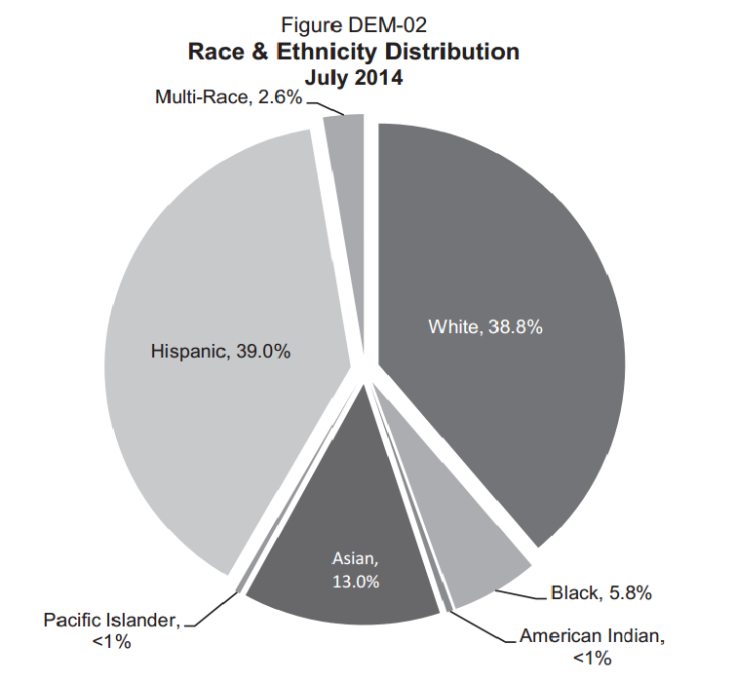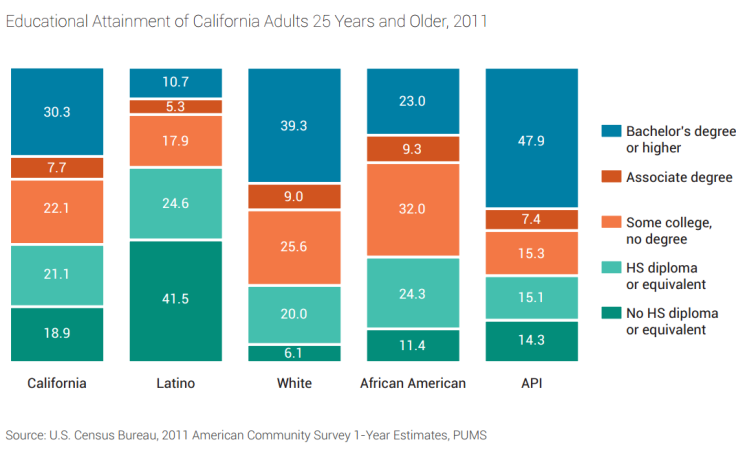Latinos Set To Outnumber Whites In California -– But What Does It Mean For The Economy?

Latinos will be the largest “race or ethnic group” in California by March 2014, and advocates say that their higher education will be the key to California’s economic growth.
According to a demographics report in California Governor Jerry Brown’s 2014-2015 budget proposal, Latinos will account for 39 percent of California’s population by March 2014. It’s great for the Golden State’s diversity, but this group will have a heavy economic impact.

“Demographic changes that are coming will reshape the electorate, and in turn, that will likely have impacts on policies and issues that decisionmakers focus on in the coming decades,” said Mindy Romero, director of the California Civic Engagement Project and the UC Davis Center for Regional Change, to the San Francisco Chronicle.
“The racial distribution of California’s population continues to transform,” the report reads. “By March 2014, the Latino population will edge past the non-Hispanic white population to become the largest race or ethnic group in the state.”
According to their data, the median age for Latinos is 28, which means many are in their childbearing years. This, the report says, will drive population growth. But there are other factors associated with this population that will have an impact on the Californian economy.
“Despite contributions of the foreign-born to California’s economic growth, the foreign-born population represents a disproportionate share of those living in poverty,” the report reads, citing a lack of English-speaking ability and lower educational attainment as a few causes.
The governor also issued an economic report focusing on unemployment as one of the greatest challenges to economic growth. The unemployment rate is not expected to drop below 7 percent until 2016.
But the demographics are important, and age is a big factor. The number of California residents 65 and older will jump by 20.7 percent in the next five years, as the population of 18-24-year-olds declines by 4.5 percent.
“As retirements increase, the need for highly skilled workers to replace retirees will also increase, as will the need for more health care professionals,” the report reads.
Some groups have suggested that this problem could be solved by raising the Latino graduation rate from higher education institutions. Currently, they have the lowest graduation rate of all ethnic groups.

“There’s no closing the gaps that California has, in terms of workers it needs just to maintain our economy, without improving college graduation for Latinos,” said Audrey Dow, director of the Campaign for College Opportunity, to the Huffington Post.
According to a report from the organization released last week, the Latino graduation rate could have a positive impact for the state economically.
“The math is clear,” the report reads.
“If the California economy is to have the college-educated workforce it needs, we must find ways to significantly improve college completion rates among Latinos.”
Dennis Cima, senior vice president of the Silicon Valley Leadership Group, said the report “further demonstrates the need for California to have a comprehensive plan to improve completion and transfer rates for Latino students.”
He added that it would be “good for business, good for the Silicon Valley economy, and good for California.”
© Copyright IBTimes 2024. All rights reserved.






















